Broccoli is one of the varieties of cauliflower that came to us from Italy. It is rarely found in summer cottages; cauliflower is preferred to it.
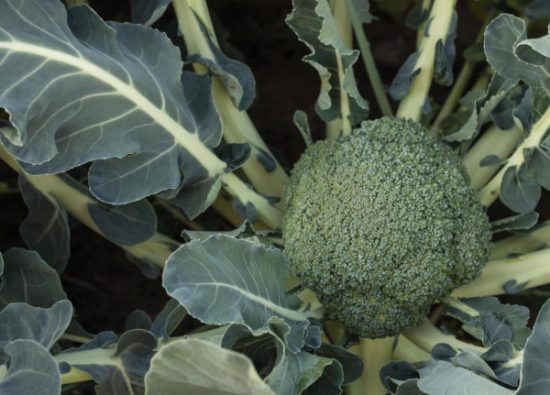 This is what broccoli looks like in the garden |
| Content:
|
Biological features
Broccoli is an annual plant that forms an inflorescence-head at the top of the rosette, which is used as food. It differs from cauliflower in its ability to form inflorescences on the side shoots (in the axils of the leaves).
Unlike cauliflower, broccoli forms a spreading rosette of leaves, reminiscent of cabbage varieties. The leaves are on long petioles, often dark green, with wavy edges in many varieties. The rosettes are high up to 110 cm; an inflorescence consisting of buds is formed at the top.
When the head outgrows, leaves begin to grow through it, and after 4-5 days it blooms. 8-10 days after flowering, the inflorescence crumbles into separate clusters and becomes inedible; pods with seeds begin to form.
|
Inflorescences also form in the leaf axils: in early varieties they grow simultaneously with the main head, in later varieties - only after cutting off the main inflorescence. |
Inflorescences also form in the leaf axils: in early varieties they grow simultaneously with the main head, in later varieties - only after cutting off the main inflorescence.
Broccoli heads are smaller than cauliflower, but due to the formation of additional inflorescences, the crop yield is greater.
The color of the heads varies: dark green, gray-green, green and purple.
Requirements for growing conditions
Initially, the crop had increased requirements for temperature, humidity and agricultural technology, but now much more suitable varieties have been obtained for our climate.
Temperature
For normal development, most varieties and hybrids require a temperature of 15-25°C. At higher temperatures, cabbage blooms quickly.Only varieties suitable for growing in hot climates are resistant to flowering. Most modern varieties perfectly retain their marketability and taste in long-term cold weather without frost.
|
Young plants can withstand frosts down to -2°C without problems, adults - down to -5°C, and some hybrids even down to -7°C. But if the frost lasts more than 3.5 hours, even adult plants die. |
Seeds germinate at a temperature of 6-7°C, but if during this period the seedlings are exposed to temperatures of 2-8°C, then later the broccoli will go into the stem and will not form an inflorescence. If the head does become tied, it will be small, hard, crumbling and unsuitable for food.
The soil
Broccoli has the highest soil requirements of all cabbage plants. It requires exclusively neutral or slightly alkaline soils with a pH of 6.5-7.5. The soil must contain humus at least 4.5-5%. Therefore, broccoli is practically not grown on podzolic soils without additional fertilizers; it grows very poorly on them. On chernozems, cabbage produces a main inflorescence of up to 500-1000 grams and side inflorescences of up to 50-90 g.
Light soils are most suitable for the crop. Sanding is carried out on heavy loams. The crop does not grow on cold clayey soils. It does not grow on sandy soils that are prone to drying out.
Light
Broccoli is very demanding of light. It needs lighting most in the first half of the growing season and especially in the early period (seedlings or, with direct sowing in the ground, before the formation of 5-6 true leaves). With long daylight hours, when plants are illuminated all day, inflorescences form quickly, but also quickly disintegrate and bloom.
In cloudy weather, during the formation of the heads, they are tied larger and denser.
When the plants are shaded or dense, the cabbage stretches out, sets very small inflorescences, or does not set them at all.
Humidity
The culture is very demanding on moisture. The highest need for water appears during the development of 6-7 leaves. At this time, the future inflorescence is formed, and if the soil is allowed to dry out, the head will form small, and the lateral inflorescences will not form at all. Irrigation is carried out with water from a well.
Broccoli varieties
Modern Russian broccoli varieties are suitable for growing in any region of the country. There are early, mid-season and late varieties and hybrids.
Early varieties
Early varieties and hybrids form an inflorescence in 70-80 days. However, the head quickly crumbles and blooms. Suitable for cultivation in the northern region, the Urals and Siberia. The average weight of the main head is 300-350 g, the side heads are 20-40 g.
- Green Magic F1 — Early hybrid. Grows in one stem, of medium height. The head is leveled, medium in size, without covering leaves, weighing up to 0.7 kg. Resistant to downy mildew. Productivity 2.2 kg/sq.m.
- Fiesta F1 — Mid-early hybrid. The head is medium-sized, very dense, weighing 0.8-1.2 kg. The hybrid is characterized by uniform harvest ripening and resistance to Fusarium wilt. Productivity 2.5-3.5 kg/m2.
- Lord F1 – an early ripening hybrid, ripening in 60-65 days, with a yield of 4 kg/m. sq. Produces large heads of 1.5 kg each. It produces additional lateral shoots, each of which can reach 200 grams. Recommended for growing in open ground.
- Batavia F1 ripens in 65-68 days.The heads are large 1-1.5 kg, dark green, round and dense, the inflorescences are easily separated from each other. Average yield 2.6 kg/m. sq. Not susceptible to cracking and fusarium, can be grown in extreme conditions.
Mid-season varieties
Mid-season varieties and hybrids set inflorescences in 90-120 days. They are grown in the Northwestern, Central regions, Moscow region and the south. The mass of the main head is 0.4-0.6 kg, additional 50-70 g.
- Arcadia F1 - mid-season hybrid. The head is massive, weighing on average 450 grams. After cutting the main head, the side ones begin to appear and ripen, but they rarely exceed 70 grams. It grows and produces good yields even with significant thickening. Due to increased immunity and frost resistance, they are grown in Siberia and the Urals.
- Linda - head of medium size, dark green, medium dense, weighing 300-400 g. Covering leaves are absent. Productivity 3-4 kg/m². after cutting from the leaf axils, up to 7 lateral heads weighing 50-70 g each grow.
- Heraklion F1 - the heads are rounded-flat, attractive green with a blue tint, dense, without covering leaves. Weight 0.5-0.7 kg. It is valued for its excellent preservation, good transportability and the formation of high yields even on poor soils.
Heraklion F1
Late varieties
Late varieties and hybrids form a head more than 120 days after full germination. They are grown mainly in the south, but with proper care they get excellent yields in the Central region and the Moscow region. The mass of the main inflorescence is 600-1000 g, the side ones - 70-90 g.
Continental - gthe tins are leveled, rounded-flat in shape, dense, open. The surface is finely lumpy. Color green. Head weight 400–600 g. Stable marketable yield 2.0–2.2 kg/m2.
Monterey F1 – a hybrid with giant heads weighing up to 1.9 kg! The color of this variety is dark green, the structure of the head is compact. Does not produce side shoots.
Monaco F1 - the head is round, medium, dense, gray-green, weighing up to 0.6 kg. The plant is single-stemmed, without side shoots, and does not form secondary heads.
The productivity of late hybrids and varieties is higher, and the quality of the products is better than that of early and middle ones. The heads are suitable for long-term storage, and in the garden they do not crumble or bloom for a long time.
When sowing directly in open ground, the ripening period of the crop is counted from full germination (the first true leaf). When growing from seedlings, the ripening period is counted from the rooting of the seedlings. The seedling period is not included in the ripening period of the crop.
Soil preparation
Acidic soils necessarily deoxidize. Without this, the growing point of the crop is deformed, the plants take on an ugly appearance and do not set an inflorescence.
Lime in any form is added as a deoxidizer (chalk, dolomite flour, fluff, limestone flour, ash, etc.). The easiest way to determine whether liming is needed or not is to see which weeds are spreading quickly throughout the area.
Plants such as sorrel, heather, lupine, buttercup, plantain, oxalis, and moss indicate acidic soil. If nettle, foxtail, quinoa, and clover quickly spread on the site (and not just grow here and there), then the soil is neutral and does not require liming.
|
If buttercups bloom, the soil is acidic. |
Apply an average of 300-400 g of fertilizer per 1 m2. Limestone and dolomite flour are embedded to a depth of 20 cm. Ash and fluff are added to a depth of 5-6 cm, since dissolving under the influence of precipitation, they penetrate into deeper layers of the soil.
Liming is carried out in the fall 2 months before adding organic matter. It is impossible to add organic matter and lime at the same time, since salts are formed that are inaccessible to plants.
Organic matter is added for digging: per 1 m2 2 buckets of fresh or 3-4 buckets of semi-rotted manure. All other fertilizers are applied when planting seedlings.
The crop does not grow well in soils that are too alkaline (pH above 8.1). To determine alkalinity, vinegar is dropped onto a lump of earth. If the soil is alkaline, it will immediately begin to foam and hiss. The higher the alkalinity, the stronger the reaction.
If the alkalinity is low (pH 8-9), then increased doses of manure are added, which slightly acidifies the soil: per 1 m2 2-3 buckets of fresh or 5-7 buckets of rotted manure to which double superphosphate is added (2 tbsp per m2).
|
The addition of bog peat (1 bucket/m) alkalizes the soil well2) or coniferous, especially pine, litter. Alkalinization is carried out simultaneously with the autumn digging of the soil. |
Seedless growing method
Broccoli can be grown without seedlings. It is recommended to sow the crop in open ground when the ground warms up to 6°C. But at this time the weather is still cold, so it is better to wait a little, because in cold weather during the germination period (2-6°C) the broccoli later goes into the stem and does not form either the main or additional inflorescences.
Sowing time
In the middle lane sowing time is the second ten days of April - early May, in the south - mid-April. In the middle zone, cabbage grows well if the summer is cool and moderately humid.
Second sowing date early-mid July. In the central regions, only early varieties are suitable for summer sowing. Varieties and hybrids with a growing season of more than 2 months may not germinate.
In the southern regions, late varieties can also be sown in summer, which are harvested in October.
Sowing seeds
Before sowing, the soil is watered with warm water. Sow in rows or in holes. Before sowing, fertilizers are applied: 2-3 tbsp. l. and nitrogen fertilizers (urea, ammonium nitrate, etc.). Fertilizers must be mixed with soil so that it does not burn the sprouted roots.
In rows, seeds are sown to a depth of 3-4 cm with a distance of 20 cm from each other. If all the seeds have sprouted, the seedlings are weeded, leaving a distance of 50 cm between plants.
|
Broccoli, unlike cauliflower, grows poorly in thickened crops and forms a small head. The distance between rows is 60 cm. |
When sowing in holes, 2 seeds are sown in one hole, and after germination one of the strongest plants is left. The holes are usually staggered with a distance of 50 cm.
After sowing, cover the plot with black spunbond for faster germination and protection from frost. You can cover each seed with a jar, but spunbond is better because it can be left on the garden bed until the end of the growing season, cutting out holes for the emerging shoots. Covering material is an excellent protection against cruciferous flea beetles.
In cold weather, emerging shoots are additionally insulated with hay or covered with lutrasil on top. The covering material can be left until the weather returns to normal. Broccoli, unlike cauliflower, will not be hot.
Although broccoli seedlings can withstand short-term frosts down to -1°C, their growing point may freeze. Therefore, on cold nights, it is better to mulch the plants with hay or cover them with spunbond.
|
The emerging seedlings are watered as soon as the soil dries slightly. In any weather, cabbage is watered with ordinary well water.In warm weather, watering is done 2 times a week; in rainy weather, the seedlings are not watered. |
After the first true leaf appears, the cabbage is fed. Usually the first fertilizing is done with organic matter: an infusion of manure or weeds is added 1 l/10 l of water. If there is no organic matter, then water with 1 tbsp of urea. on a bucket of water.
Growing seedlings
Broccoli grown mainly through seedlings. To obtain a harvest throughout the summer-autumn season, seeds are sown at several times.
- To collect early products, sowing is carried out from March 15 to April 15 with an interval of 10 days.
- To obtain a summer harvest from April 20 to June 1.
- For autumn harvest from June 1 to July 1.
In the southern regions, early varieties for seedlings can be sown later, up to July 15. Late summer sowing is not done in the northern regions, since the crop will not have time to produce a harvest before the onset of cold weather.
It is better to buy soil for seedlings, paying special attention to its acidity (pH 6.5-7.5). Garden soil is not suitable for broccoli, and creating optimal acidity on your own is difficult.
|
Sow 1 seed per container. The crops are covered with film and kept in a dark place at a temperature of 18-22°C. |
Shoots appear in 2-4 days. You can also place the crops in colder conditions (12-15°C), but then the seedlings will appear in 7 days.
Seedling care
Immediately after emergence, the seedlings are placed in a sunny and cool place with a temperature of 10-12°C during the day and 7-10°C at night. Seedlings require a lot of sunlight, but overheating during the day and severe cooling at night is undesirable. At first, the seedlings are shaded, otherwise they may burn. If the seedlings are located on the eastern or western window, then after 5-7 days the shading is removed, but if on the southern window, then they are left until planted in open ground.
Watering the seedlings is carried out regularly; the soil should not dry out. When the soil dries out during the germination period, the broccoli then begins to shoot and does not set heads. Water with cold, settled water.
When the first true leaf appears, the seedlings are fed with humates or complex fertilizers:
- Sturdy
- Baby
- Uniflor-micro
The second feeding is done when the second true leaf appears.
Broccoli is planted in open ground when the seedlings have 3 true leaves. Overgrown seedlings are rejected because they take a long time to take root and subsequently produce very small heads.
Transplanting
Before planting, cabbage is hardened for 7-10 days. It is advisable to place the seedlings in a greenhouse and leave them open even at night if the temperature outside is not lower than 8°C. If lower, then leave at least one window.
Landing is carried out in the evening or on a cloudy day. The density of plantings depends on the variety and purpose of growing broccoli.
|
If it is necessary to obtain a large number of lateral inflorescences, then they are planted with a distance of 70 cm between plants, but if they are grown for the sake of the main head for subsequent storage, then they are planted with a distance of 50 cm from each other. |
Add 0.5 cups of ash and 1 tbsp urea to the prepared holes. l. or on carbonate soils, instead of ash, you can apply a complex fertilizer with microelements. If possible, add 2 cups of rotted manure to the hole. All fertilizers are sprinkled with soil. The hole is filled with water and seedlings are planted. Plant it a little deeper, up to the first true leaves, sprinkling the cotyledons with soil.
Immediately after planting, the seedlings are watered again.
Broccoli takes root within 3-5 days, but if the roots are damaged, it may take up to 10 days. The survival rate is high, plants, as a rule, do not fall out.
Caring for broccoli in the ground
Caring for broccoli is somewhat easier than cauliflower, but there are a number of features of caring for the crop that you need to know.
Shelter from frost
The planted seedlings are covered with lutrasil on cold nights. It must be remembered that cabbage will begin to shoot if it is exposed to low temperatures for a long time (4-5 nights). If frost is expected, then it is enough to cover the crop with lutrasil; it tolerates frosts down to -1°C. During severe frosts, plants are additionally insulated with hay.
Watering
For a week after planting in open ground, broccoli is watered daily until it takes root and a new leaf appears. Then water according to the weather, but at least 2 times a week. During prolonged rains, watering is not done, however, if there are short-term heavy summer showers that do not wet the soil, water as usual.
|
During prolonged drought, watering is done daily. Watering norm is 15-20 liters per plant. |
Simultaneously with watering, it is advisable to apply lime on acidic soils by watering the crop with lime milk. Liming is carried out once every 2 weeks. Instead of lime, you can add an infusion of ash.
Feeding
Broccoli needs microelements much more than cauliflower. especially in boron, so after rooting the seedlings, they are regularly fed with microfertilizers containing boron. Very good for this purpose are:
- Uniflor-Micro
- Intermag-Ogorod
- Infusion of ash with the addition of 3 g of boric acid per bucket of solution.
Nitrogen is fed very limitedly, since it causes strong growth of the rosette to the detriment of the development of the heads. If you overfeed with nitrogen, broccoli may not set an inflorescence at all.Only on very poor soils do organic fertilizing be done during the initial growth period. The nitrogen contained in complex fertilizers is quite sufficient for broccoli.
|
Broccoli has a lower potassium requirement than cauliflower, but it is still needed in larger quantities. During the season, early varieties are fed 2-3 times, late varieties - up to 5 times. |
For the first feeding add ash with boric acid or any microfertilizer containing boron plus 1 tbsp nitrogen fertilizer. l. On poor soils they feed weed infusion or manure.
2nd feeding. Water with 1 tbsp potassium sulfate solution. l. in a bucket or infusion of ash. You can add 0.5 cups of ash in dry form under the plant, sprinkle it with soil and be sure to water it well. If the ash is used as a top dressing, then deoxidation is carried out with milk of lime. Add 1 tbsp to potassium fertilizer. l. urea.
3rd feeding. For early varieties, Uniflor-Micro microfertilizers or an infusion of ash with boric acid are applied; for late varieties, phosphorus-potassium fertilizers are applied.
4th and 5th feeding for late varieties. A solution of microfertilizers is applied at the root.
Features of care
- Before the leaves close, the broccoli is regularly loosened shallowly.
- Weeding in the early period is mandatory. Although cabbage is quite spreading and when the leaves grow, it suppresses weeds, but in the early period, when the plot is neglected, it develops poorly.
- In broccoli, unlike cauliflower, the inflorescences are well protected by covering leaves and do not require additional protection.
Harvest
Cleaning is carried out selectively. It is quite difficult to determine the readiness time of the heads. In the morning they were intact, but by evening they break up into inflorescences and begin to bloom.
Therefore, the main criterion of readiness is the beginning of leaf germination through the head. After cutting off the top inflorescence, the plant is left on the garden bed; after a while, lateral heads will form, although their mass is much less.
|
It is advisable to harvest broccoli in cool weather, so the heads will last longer. |
In hot weather, cleaning is carried out once every 2-3 days, in cold weather once every 7-10 days. The inflorescence is cut off with a stem up to 10 cm long. There is no need to cut off a longer stump, otherwise most of the lateral buds, from which the lateral heads develop, are also removed along with it.
The heads should be dense and not shaggy. If they bloom, they become tough and inedible.
|
The cut head is wrapped in film and immediately placed in a cool place with a temperature of 1-2°C. This is done to prevent cabbage from blooming, as well as to maintain elasticity. The cut inflorescence quickly evaporates water and becomes flabby after an hour. |
Storage methods
You can store broccoli in the refrigerator, in the cellar, or frozen. Storage temperature no more than 2°C, humidity 85-90%. At higher temperatures, the inflorescences quickly lose their elasticity and nutrients, which is why cabbage is so valued.
If the cabbage will be stored at above-zero temperatures (in the refrigerator or cellar), then it cannot be washed., otherwise rot will immediately appear. If the crop is frozen, the head should be rinsed.
Fridge. Cabbage can be stored for up to 3 weeks. Then it still withers, since the temperature in the vegetable drawer is high (4-7°C). You can place the heads in a bag, making several holes in it to evaporate excess moisture. Or you can wrap the cabbage tightly in cling film - this will increase the shelf life by 7-10 days.
|
In any case, cabbage can be stored in the refrigerator for 3-5 weeks. |
Cellar. Storage temperature should not be higher than 2°C. Since the humidity in the cellar is low, the inflorescences are tightly wrapped in cling film. Packed inflorescences are placed in one layer in boxes with holes. In this form, the crop is stored for 8-9 months.
If the heads are not wrapped in film, then the boxes are placed on damp sand and moistened once every 3 weeks. You can place a damp cloth on the bottom of each drawer. Without wrapping in film, broccoli can be stored for 4-6 months.
Freezing. This is the most reliable and long-lasting way to store crops. Before harvesting for storage, the head is disassembled into individual inflorescences and washed if necessary. The inflorescences can be stored either whole or sliced. Prepared products are placed in plastic bags or containers and frozen.
|
Frozen cabbage can be stored for up to 12 months. |
Possible problems during cultivation
- The cabbage sets a very small head, and the sides do not develop at all. Thickened crops. The rosette of broccoli leaves is spreading, so it requires more space than the colored one. When the garden bed becomes denser, the plants do not have enough light and space, and they begin to compete with each other for growth factors. As a result, the central inflorescence either does not form at all or is very small.
- The central inflorescence does not set for a long time and is very small. Overgrown seedlings that take a very long time to take root. Such plants are unable to set any kind of full head. It is always small and loose. It is better not to plant overgrown seedlings.
- The head is not formed. Broccoli was planted early in open ground and cabbage grew for a long time at temperatures from 2°C to 8°C.In such weather, plants are insulated with hay or covered with spunbond. There is no way to correct the situation in the future. The cabbage begins to stem despite feeding. Such copies are thrown away.
- Cabbage does not develop, withers and dies. Acidic soil. Broccoli grows only in neutral or slightly alkaline soils. On acidic soils, without carrying out deacidification measures, the culture fails.
In general, broccoli is somewhat less demanding in terms of agricultural technology than cauliflower.
Video: Broccoli cabbage health product
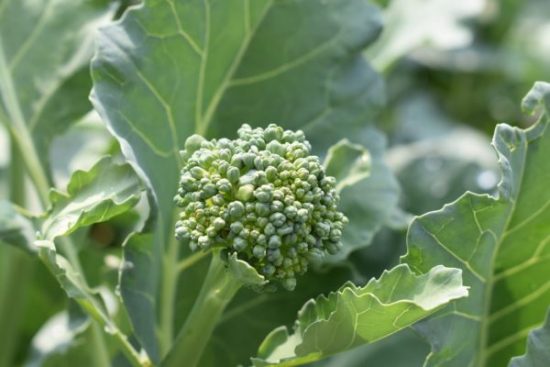
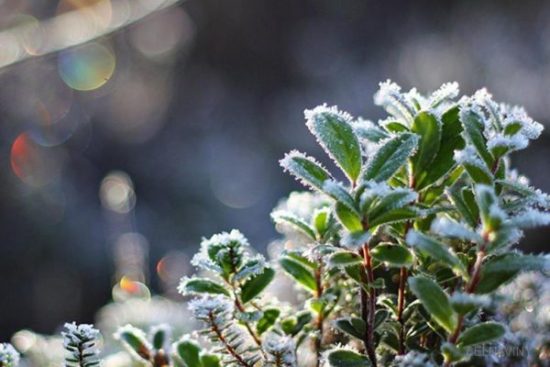
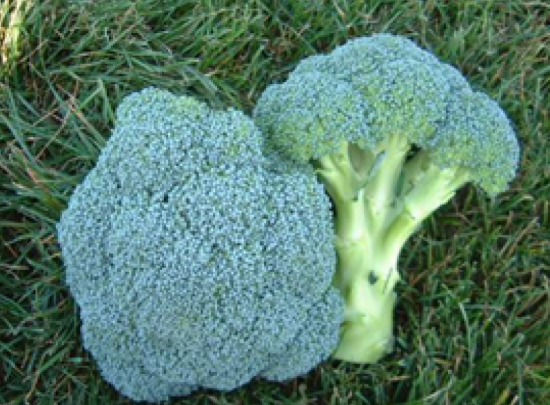
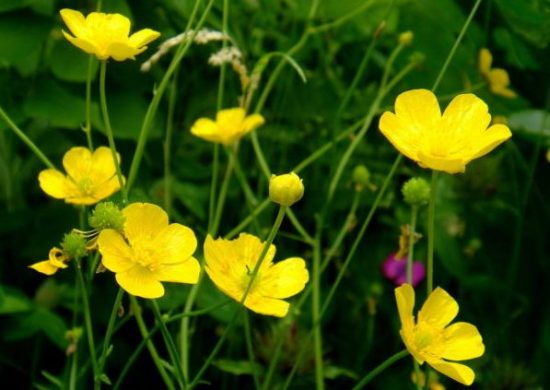
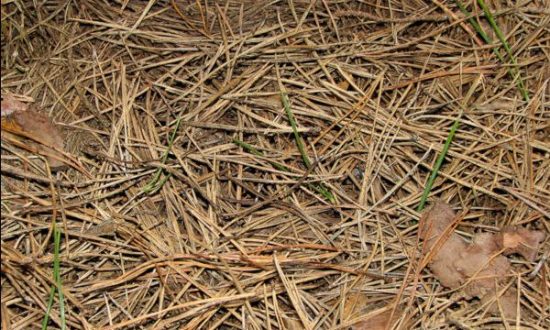
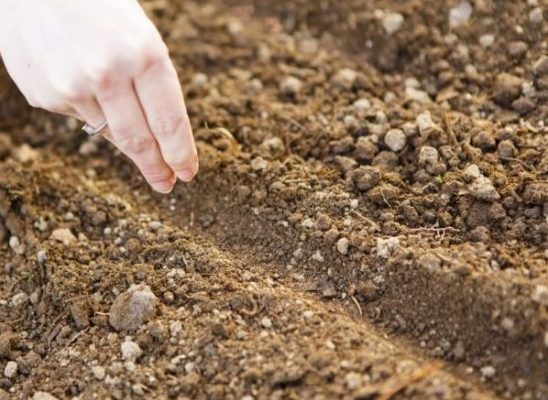
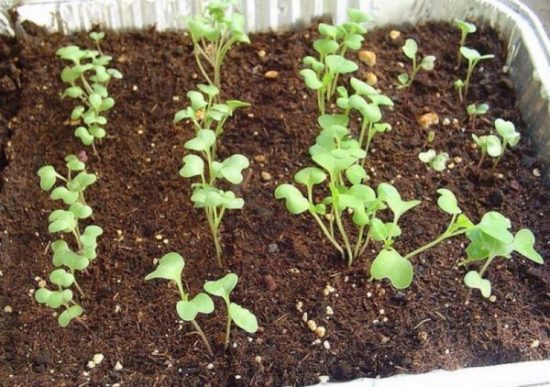
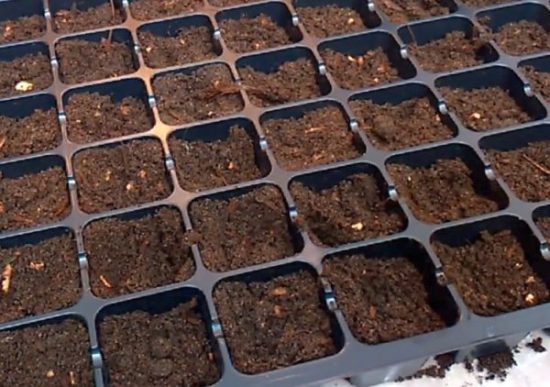
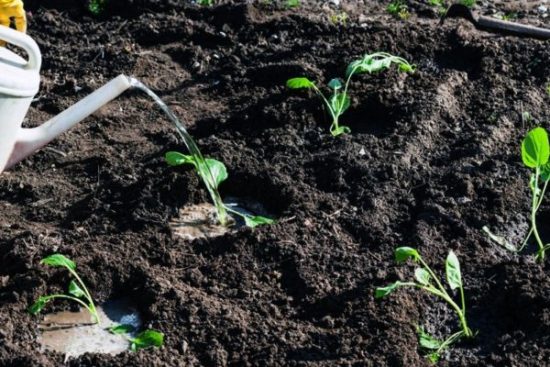
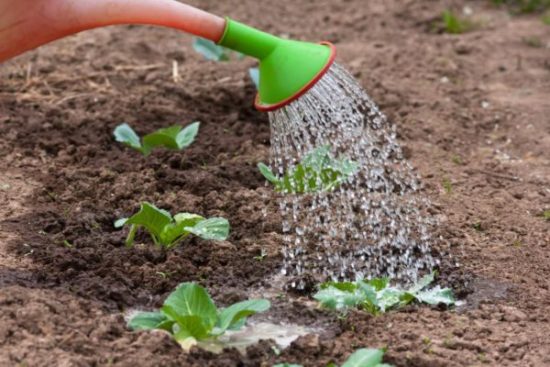
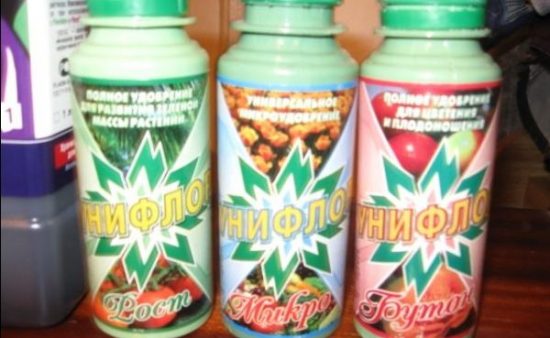
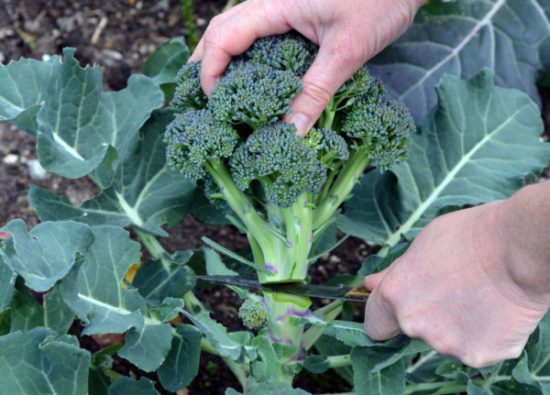
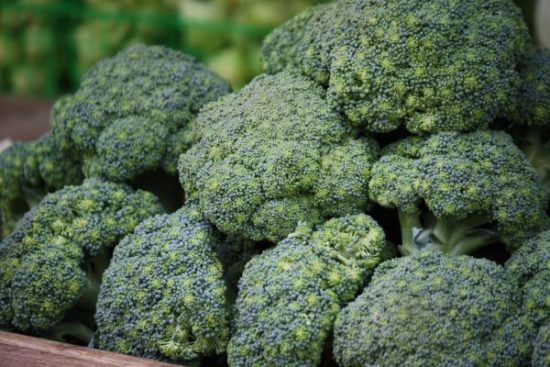
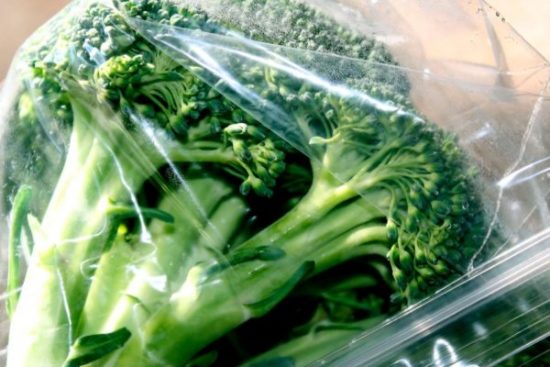
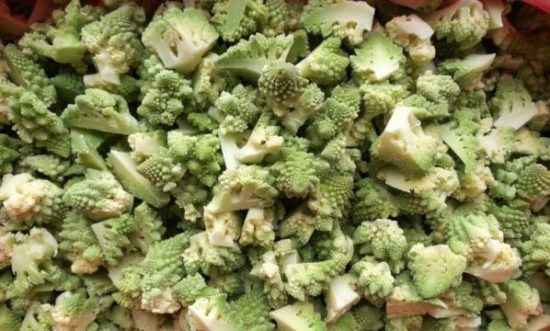


 (6 ratings, average: 3,67 out of 5)
(6 ratings, average: 3,67 out of 5) CUCUMBERS NEVER GET SICK, I'VE BEEN USING ONLY THIS FOR 40 YEARS! I SHARE A SECRET WITH YOU, CUCUMBERS ARE LIKE THE PICTURE!
CUCUMBERS NEVER GET SICK, I'VE BEEN USING ONLY THIS FOR 40 YEARS! I SHARE A SECRET WITH YOU, CUCUMBERS ARE LIKE THE PICTURE! You can dig a bucket of potatoes from each bush. Do you think these are fairy tales? Watch the video
You can dig a bucket of potatoes from each bush. Do you think these are fairy tales? Watch the video
 How our fellow gardeners work in Korea. There is a lot to learn and just fun to watch.
How our fellow gardeners work in Korea. There is a lot to learn and just fun to watch. Eye trainer.The author claims that with daily viewing, vision is restored. They don't charge money for views.
Eye trainer.The author claims that with daily viewing, vision is restored. They don't charge money for views. A 3-ingredient cake recipe in 30 minutes is better than Napoleon. Simple and very tasty.
A 3-ingredient cake recipe in 30 minutes is better than Napoleon. Simple and very tasty. Therapeutic exercises for cervical osteochondrosis. A complete set of exercises.
Therapeutic exercises for cervical osteochondrosis. A complete set of exercises. Which indoor plants match your zodiac sign?
Which indoor plants match your zodiac sign? What about them? Excursion to German dachas.
What about them? Excursion to German dachas.